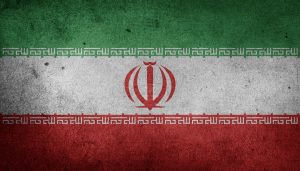India is trying to breathe life into Iran’s long delayed Chabahar port. India Ports Global Limited (IPGL) and the Ports and Maritime Organization of Iran signed a 10-year deal on May 13 that allows New Delhi to develop and operate the Iranian port of Chabahar. Under the agreement, IPGL will invest about $120 million while there will be an additional $250 million in financing, bringing the contract’s value to $370 million.
The “Chabahar Agreement” to establish an international transport and transit corridor between India, Afghanistan, and Iran goes back to May 2016. The agreement sought to use the port not only to transport and transit goods and passengers among all these three countries but also to attract the transit of goods and passengers from other countries. Then-Iranian President Hassan Rouhani inaugurated the first phase of the Chabahar Port in December 2017. The IPGL first took over operations of the port at the end of 2018 and has since handled container traffic of more than 90,000 TEUs with bulk and general cargo of more than 8.4 million tonnes.
The Trump administration issued a waiver in 2018 that exempted Chabahar from U.S. sanctions to enable the port’s use to aid Afghan reconstruction efforts. At the time, a State Department spokesman said that U.S. President Donald Trump’s “South Asia strategy underscores our ongoing support of Afghanistan’s economic growth and development as well as our close partnership with India.”
“This exception relates to reconstruction assistance and economic development for Afghanistan. These activities are vital for the ongoing support of Afghanistan’s growth and humanitarian relief,” the spokesman added.
Responding to the recent agreement, however, the United States has sounded a word of caution, indicating the Indian company IPGL is liable to be sanctioned if it goes ahead with the investment.
American considerations regarding Chabahar have changed since it exited Afghanistan in August 2021. Washington has no plans to recognize the Taliban-led regime that replaced the Republic government and has worked on a strategy that applies financial pressure in the hopes of shifting the Taliban’s regressive policies. Although such a strategy has not yielded any results, the activation of Chabahar as a major trade and transit hub that the Taliban can benefit from potentially further diminishes the prospects of the U.S. strategy.
For India, on the other hand, Chabahar is a project that provides multiple benefits. It is about maintaining its historical ties with Iran, which had been damaged to an extent as the Indian import of Iranian oil had dried up and their policies on a host of matters have diverged. It is about also activating the dormant International North-South Transport Corridor (INSTC) that aims at facilitating trade between India, Iran, Russia, and several Central Asian and West Asian states. With the India-Middle East Economic Corridor (IMEC) project unveiled with much enthusiasm in 2023 being almost given up for dead amid Israel’s war in Gaza and negotiations for free trade agreements with the EU and U.K. stuck in limbo, India’s need for alternate trade routes has grown immensely.
Chabahar is also about India reinventing itself in Afghanistan, much in the same manner it did for two decades between 2001 and 2021, building close relations with the Republic government and with common Afghans. One of the crucial aspects of the 2016 Chabahar agreement was to provide land-locked Afghanistan “access to open seas,” bypassing Pakistan’s Karachi and Gwadar ports. Pakistan has over the decades repeatedly closed its borders to Afghanistan, denying the country access to the sea and trade and transit opportunities with India and South Asia. The same has become relevant yet again in the light of difficult Afghanistan-Pakistan relations.
The groundwork to reactivate Chabahar to provide an alternate route has been laid through numerous negotiations, both overt and behind the scenes.
In the past few months, India’s proximity to the Taliban has grown, corresponding with plummeting Afghanistan-Pakistan relations and also turbulent Tehran-Islamabad ties. Taliban officials have spoken publicly about disconnecting from “a country [i.e. Pakistan] that has been heavily involved in Afghanistan’s affairs.” During the March 2024 meeting between Amir Khan Muttaqi, the Taliban’s foreign minister, and J.P. Singh, the head of the Afghanistan and Pakistan Division of India’s Foreign Ministry, in Kabul, Chabahar came up for discussion. A statement from the Taliban Foreign Ministry on March 28 specifically mentioned India’s “support for bolstering trade between the two nations via the Chabahar port.” Earlier that month, the Taliban announced its plan to invest around $35 million in Chabahar port.
Indian, as well as Iranian, approaches toward the Taliban have converged on engagement with the Islamic Emirate. It isn’t difficult, therefore, to see that New Delhi, Tehran, and Kabul are trying to overcome the sense of déjà vu by implementing the original Chabahar plan. Even if this entails going ahead with the deal without express endorsement from the United States, these regional players are willing to risk a gamble on the regional chess board.
Backchannel diplomacy and robust strategic ties between India and the U.S. have allowed New Delhi to bypass U.S. sanctions while importing S-400 missiles and subsequently oil from Russia. This time too, New Delhi remains confident it will be able to, in the words of the Indian foreign minister, “communicate, convince and get” the United States’ hushed nod on the Chabahar deal, so that IPGL won’t be sanctioned. New Delhi remains a critical partner for the U.S. in its growing competition with China and Washington would avoid harsh measures, especially in an election year. More importantly, in time of shifting regional alignments and alliances, India and the United States will have to navigate a complex and difficult regional terrain as they look toward avenues for building a stronger strategic partnership.
































